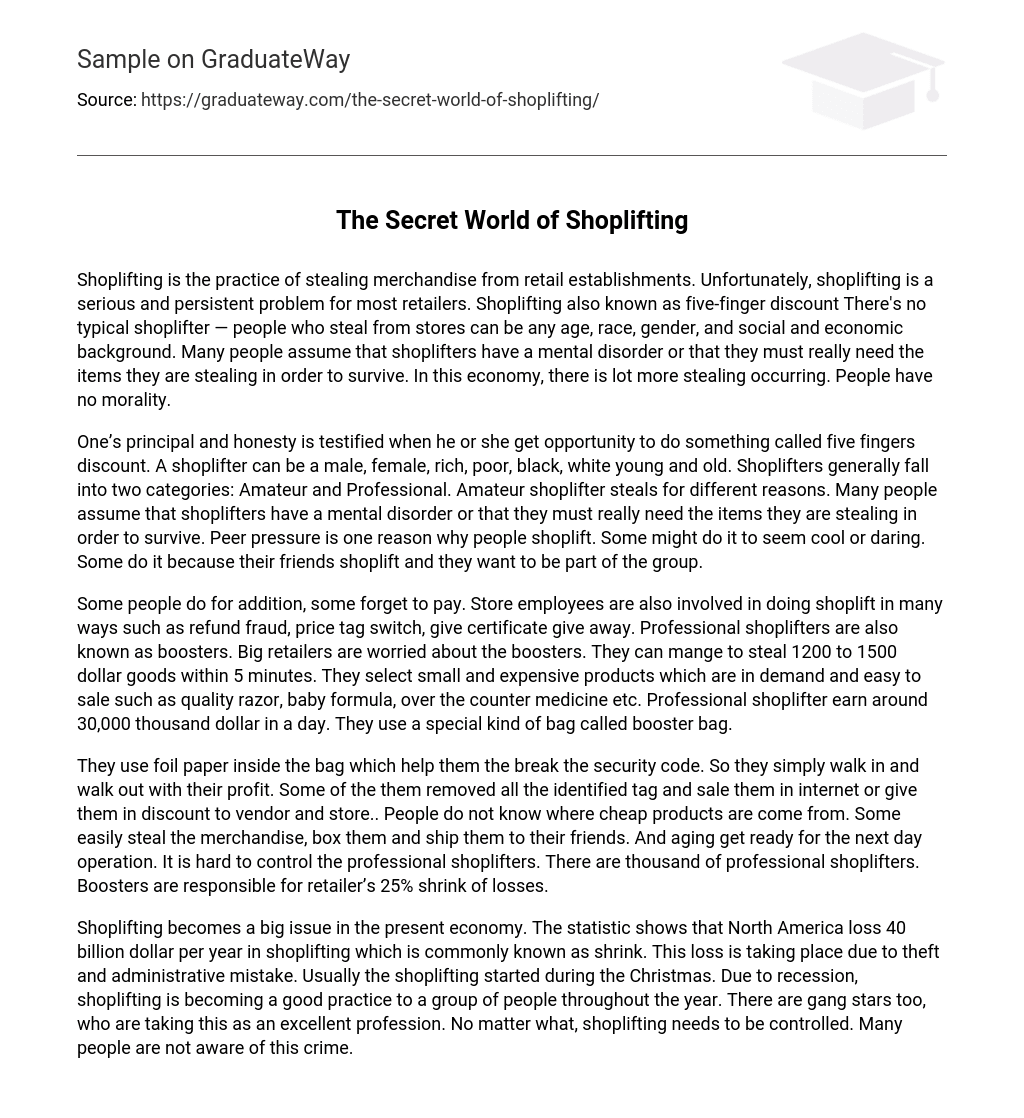Shoplifting, also known as the five-finger discount, is the act of stealing items from retail stores. This poses a significant and ongoing issue for retailers. It is important to acknowledge that people of all ages, races, genders, and social and economic backgrounds can engage in shoplifting. Some individuals believe that shoplifters may have a mental disorder or feel compelled to steal in order to meet their basic needs. In the current economy, there has been an increase in theft which reflects a decrease in ethical values.
Shoplifting, commonly known as the “five fingers discount,” is a conduct that illustrates a person’s moral values and truthfulness. Irrespective of gender, wealth, race, or age, anyone can partake in shoplifting. There are two categories of shoplifters: Amateurs and Professionals. The motivations behind amateur shoplifters’ actions vary greatly. Some believe that mental disorders or strong desires for stolen items drive them to engage in this behavior. Additionally, peer pressure plays a significant role in influencing individuals to participate in shoplifting; some do it to appear trendy or courageous, while others join their friends who are already involved in this unlawful activity.
Some individuals engage in theft for personal gain, while others may unintentionally neglect to make necessary payments. Employees of stores also participate in various forms of shoplifting, including refund fraud, price tag manipulation, and illicit distribution of gift certificates. Large retailers are especially concerned about skilled shoplifters known as boosters who can easily steal merchandise worth between $1200 and $1500 within five minutes. These boosters target small yet valuable items that are highly sought after and easy to resell, such as premium razors, baby formula, and over-the-counter medicine. Professional shoplifters can earn around $30,000 on an average day by using specialized bags called booster bags.
The use of foil paper inside the bag aids in breaking the security code, allowing them to easily enter and exit with their stolen goods. Some individuals remove any identified tags and sell them online or offer them at a discounted price to vendors and stores. Consumers are unaware of the origin of these inexpensive products. Others effortlessly steal merchandise, package it, and ship it to their acquaintances. They then prepare for their next day’s operation. It is challenging to regulate these expert shoplifters, as there are thousands of them. Boosters contribute to 25% of the retailer’s loss due to shrinkage.
Shoplifting is a significant problem in the current economy, resulting in a loss of $40 billion per year in North America. This loss, also known as shrink, occurs due to theft and administrative errors. The issue of shoplifting typically escalates around Christmas and has become a common practice throughout the year due to the recession. Some individuals even see it as a lucrative profession, including gang members. Regardless, it is crucial to control shoplifting as many people are unaware of the severity of this crime.





